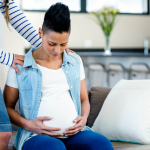In a recent article, Margaret Spinelli, MD describes a proposal to the DSM-V committee of the American Psychiatric Association in 2020 arguing for the inclusion of postpartum psychosis as a unique diagnosis based on the cognitive disorganization that accompanies postpartum psychotic symptoms. The article clearly lays out the rationale for the inclusion of postpartum psychosis in the DSM, highlighting the distinctive features of postpartum psychosis and describing how the failure to appreciate these features may hinder the diagnosis and treatment of postpartum psychosis.
Spinelli starts by giving a historical perspective of the inclusion of postpartum psychiatric illness in the DSM. The first version of the Diagnostic and Statistical Manual of Mental Disorders (DSM) was published in 1952 to aid clinicians in the recognition and consistent classification of specific psychiatric illnesses. In this first version, postpartum psychosis was included as Involutional Psychotic Reaction. In the second version of the DSM (1968), postpartum psychosis was again included, this time as Psychosis with Childbirth. However, postpartum psychosis was dropped from the DSM in 1980. In fact, the word “postpartum” was expunged from the next two versions of the DSM. Despite an increased interest in and awareness of perinatal mood disorders in the following twenty years, postpartum psychiatric disorders, including postpartum psychosis, did not find their way back into the DSM until 1994.
When the diagnosis of postpartum psychosis reappeared in the DSM IV-TR in 1994, it was incorporated using the specifier “with postpartum onset” which could be used to describe a brief psychotic disorder or a major depressive, manic, or mixed episode with psychotic features in an individual with either major depressive disorder or bipolar disorder, if the onset occurred within 4 weeks postpartum.
The postpartum onset specifier recognizes the temporal association of postpartum psychosis with childbirth; however, it fails to acknowledge how postpartum psychosis may differ from other types of psychotic experiences. While this may seem like a minor semantic issue, not recognizing the distinctive features of postpartum psychosis may hinder diagnosis and treatment.
Spinelli notes that since the earliest reports of postpartum psychosis in the medical literature, clinicians, including Esquirol in 1838 and Victor Louis Marce in 1858, have noted the distinctive features of postpartum psychosis. Fairly consistently, postpartum psychosis has been described as a complex clinical picture encompassing a triad of psychiatric symptoms: mood symptoms, psychosis and cognitive disorganization, “ a delirium-like state of confusion and disorientation”.
Cognitive Disorganization or Delirium as a Unique Feature of Postpartum Psychosis
Since clinicians first began to describe postpartum psychosis, they have reported on the unusual cognitive disorganization and disorientation observed in this patient population. Clinicians have reported a spectrum of cognitive symptoms and distortions, including distractibility, difficulties with communication, memory problems, disorientation, confusion, depersonalization, and derealization. These symptoms are similar to those we see with delirium, and like delirium, the symptoms of postpartum psychosis emerge rapidly, within hours or days, and can have a waxing and waning quality.
In a report published in 1994, Wisner and colleagues tried to better characterize the differences between postpartum and non-postpartum psychosis. This study prospectively compared women with postpartum psychosis (n?=?21) to those with psychosis unrelated to childbirth (n?=?96) using formal cognitive testing. Women with postpartum psychosis reported higher scores on measures of cognitive disorganization psychosis or delirium. In addition, women with postpartum psychosis were more likely to report homicidal ideation, lack of insight, functional impairment and atypical visual, tactile and olfactory hallucinations. These findings also suggest that postpartum psychosis has many delirium-like features: cognitive disorganization, functional impairment, lack of insight, and unusual perceptual disturbances.
Delirium is a clinical syndrome, characterized by an acute and fluctuating alteration in awareness and cognition resulting from pathophysiological changes. Delirium can have many different causes: severe medical illness, medication toxicity, drug intoxication or withdrawal, fever, infection, metabolic imbalances, sleep deprivation, As a result the clinical presentation is varied and is influenced by the clinical context in which delirium occurs.
While the symptoms of postpartum psychosis — its rapid onset, the waxing and waning quality, and the unusual quality of perceptual disturbances — overlap with delirium, we do not typically consider the physiologic changes that may trigger postpartum psychosis. Spinelli notes that this “disregards the neurohormonal triggering factors of childbirth and the impact of the massive hormone withdrawal at the time of childbirth that generates modifications and dysregulation of brain chemicals.”
Spinelli argues that this cognitive disorganization not only distinguishes postpartum psychosis from other types of psychosis, but it is also the feature that makes postpartum psychosis so dangerous:
The cognitive or delirium-like state must be anticipated because of the waxing and waning, confusion, and disorientation that contributes to the mother’s poor judgment and impulsivity. “Waxing and waning,” such that the woman seems well at one moment then floridly psychotic in the next, may not be anticipated. Mother must be supervised and separated from the infant. Importantly, clinicians untrained in perinatal psychiatry have often missed the subtle symptoms. Many infants have been killed during this period of “pseudo-wellness.”
Why Postpartum Psychosis Should Be Included in the DSM-V
While postpartum psychosis is rare, affecting only one out of every 1000 women after childbirth, it causes significant morbidity and mortality in this population. Women with postpartum psychosis are at significant risk for suicide. In addition, postpartum psychosis puts the infant at risk, with estimates of infanticide ranging form 1 to 4.5%.
The current use of the postpartum onset specifier to classify women with postpartum psychosis is clearly insufficient:
- It fails to include important clinical information, more specifically the cognitive disorganization and delirium-like features which occur more commonly in postpartum psychosis than in non-puerperal psychosis.
- It does not include information on medical conditions specific to the postpartum period which may cause a similar clinical picture, including autoimmune thyroiditis and NMDR encephalitis.
- It fails to communicate important clinical information regarding the need for ensuring the safety of the mother and the infant, given the heightened risk for suicide and infanticide.
- It does not highlight the strong link between postpartum psychosis and bipolar disorder, and thus does not provide important clinical information on risk for non-puerperal recurrence and possible long-term treatment strategies.
- It does not include information to guide the choice of effective treatments. Specifically many women with postpartum psychosis require treatment with antipsychotic medications and a mood stabilizer.
- It does not include information which would ultimately improve clinical outcomes. Acknowledging the recurrent nature of postpartum psychosis would allow for prophylactic interventions in subsequent pregnancies.
While the DSM committee reviewing this information did not ultimately approve the inclusion of postpartum psychosis as a distinct diagnosis, the committee did acknowledge that the current “with postpartum onset specifier” is insufficient for women with postpartum psychosis. They proposed that postpartum psychosis should be included in Section 3 of the DSM: “Conditions for Further Study”. The hope is that this would encourage further research. (Premenstrual dysphoric disorder or PMDD was placed in that section in the DSM-IV and ultimately made it into the DSM-V as a distinct diagnosis.)
Given the rarity and rapidly evolving nature of postpartum psychosis, it is extremely difficult to study. It is nearly impossible to collect prospective data using standardized instruments. We are now in the midst of what we call our MGHP3 Study, the MGH Postpartum Psychosis Project. We are collecting clinical and demographic information, as well as genetic samples, from women who have experienced postpartum psychosis, in an effort to better understand the etiology of illness.
Ruta Nonacs, MD PhD
Spinelli M. Postpartum psychosis: a diagnosis for the DSMV. Arch Womens Ment Health. 2021 Sep 8.








Leave A Comment